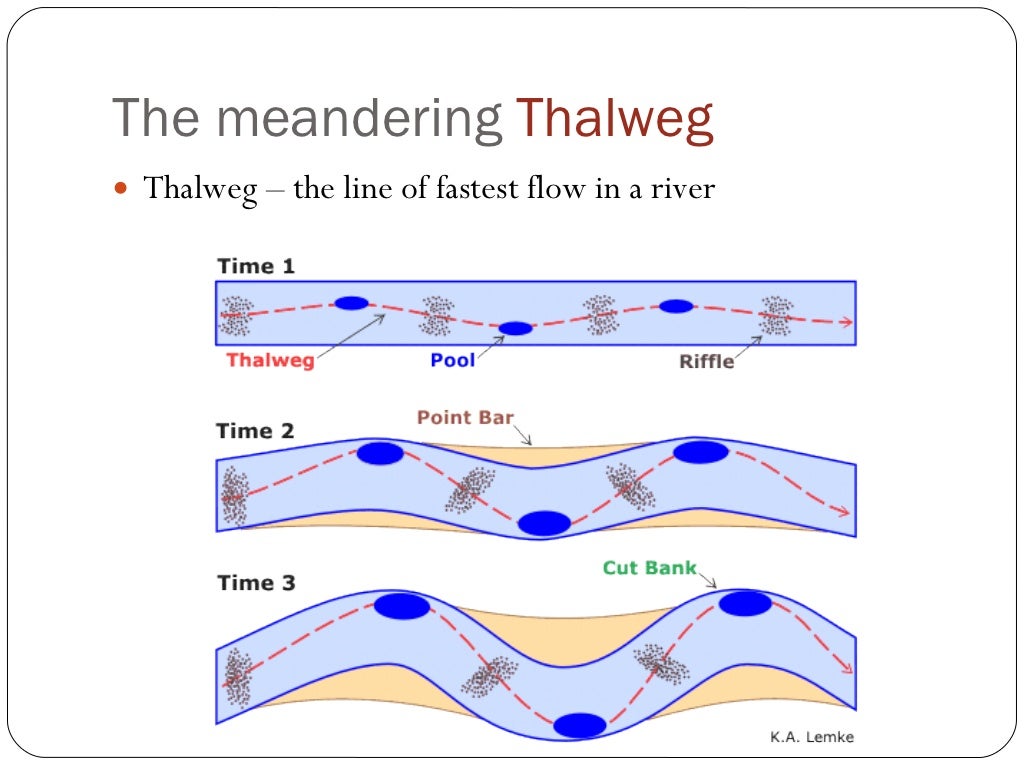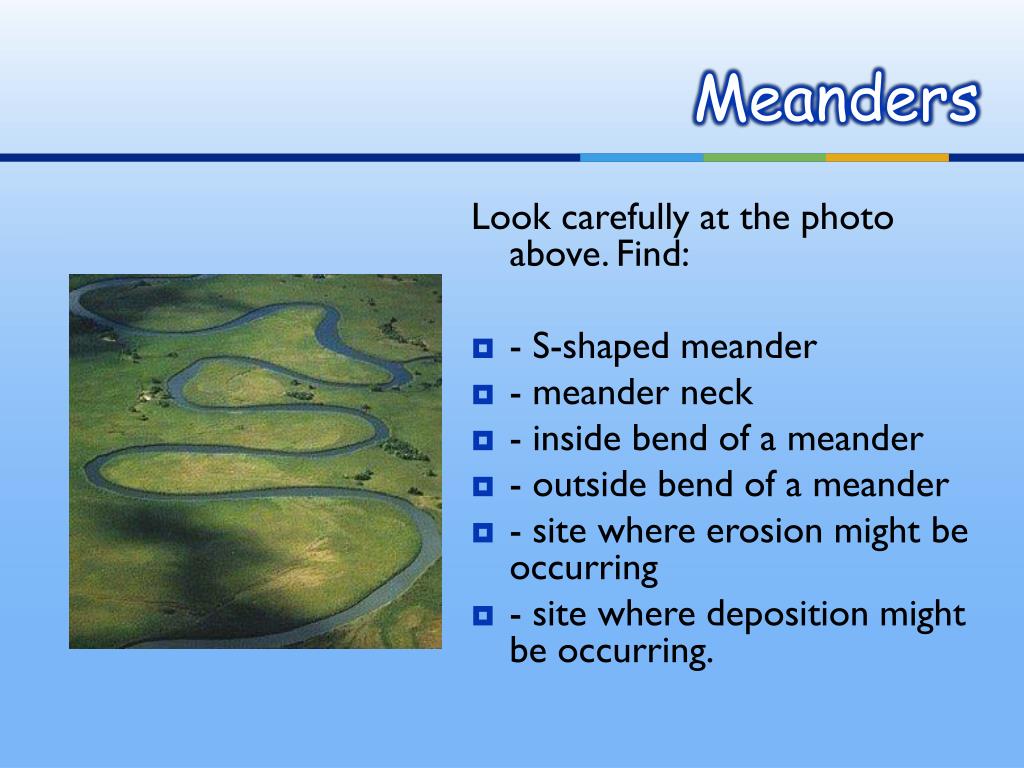

In South Texas, oxbows left by the Rio Grande are called resacas. What is a cut off lake called?Īn oxbow lake is a U-shaped lake or pool that forms when a wide meander of a river is cut off, creating a free-standing body of water. Neck cutoff occurs if a meander neck is narrow enough for streamflow to follow a straight course (Stolum 1996). The formation of meanders is due to both deposition and erosion and meanders gradually migrate downstream.Ī cutoff meander is a former, abandoned section of a river or channel, which is evolved so large in curvature that finally detached from the original channel. Īs the river erodes laterally, to the right side then the left side, it forms large bends, and then horseshoe-like loops called meanders. When a river flows over flatter land it develops large bends called meanders. Lateral erosion starts to widen the river. This causes individual meanders to grow larger and larger over time.ĭefinition of entrenched meander : incised meander specifically : one with slopes of about the same steepness on each side of the stream - compare ingrown meander.ĭefinition of ingrown meander : an incised meander (as of a river) with a steep undercut slope on one side and a gentle slip-off slope on the other side. from the outer curve of each meander bend and deposit it on an inner curve further down stream. Rivers flowing over gently sloping ground begin to curve back and forth across the landscape. What causes the river to meander and get wider?

MEANDER DEFINITION FULL
For communities that live along the riverbanks, those processes might impact directly their lands, leading to a territory expansion or reduction.Ī meander cutoff is a natural form of a cutting or cut in a river occurs when a pronounced meander (hook) in a river is breached by a flow that connects the two closest parts of the hook to form a new channel, a full loop. The river meander migration changes the floodplain landscape over time due to the processes of erosion and sedimentation. What are the effects of meander migration? Some Earth scientists recognize and use a finer subdivision of incised meanders. The meanders of a stream or river that has cut its bed down into the bedrock are known as either incised, intrenched, entrenched, inclosed or ingrown meanders. What are the different types of meanders? What is the difference between incised and ingrown meanders?.What causes the river to meander and get wider?.What are the different types of meanders?.Over time, meanders become larger and more visible.Įventually meanders turn into oxbow lakes when two outside bends erode together making a shorter route for the water. The slower water drops sediment.Ĭontinuous erosion on the outer bank and deposition on the inner bank will expand the bend in the river. The river flows more slowly on the inside of the river beach. The river flows faster on the outside of a curve, and the fast water erodes the outside bends of a river channel by hydraulic action and abrasion. There are areas of slower and faster water movement. Meanders were named for a river in Anatolia.Ī river rarely flows in a straight line: it bends around because it drops sediment where it flows most slowly.

The position of the curves changes over time. Meanders form a snake-like pattern as the river flows across a fairly flat valley floor.


 0 kommentar(er)
0 kommentar(er)
